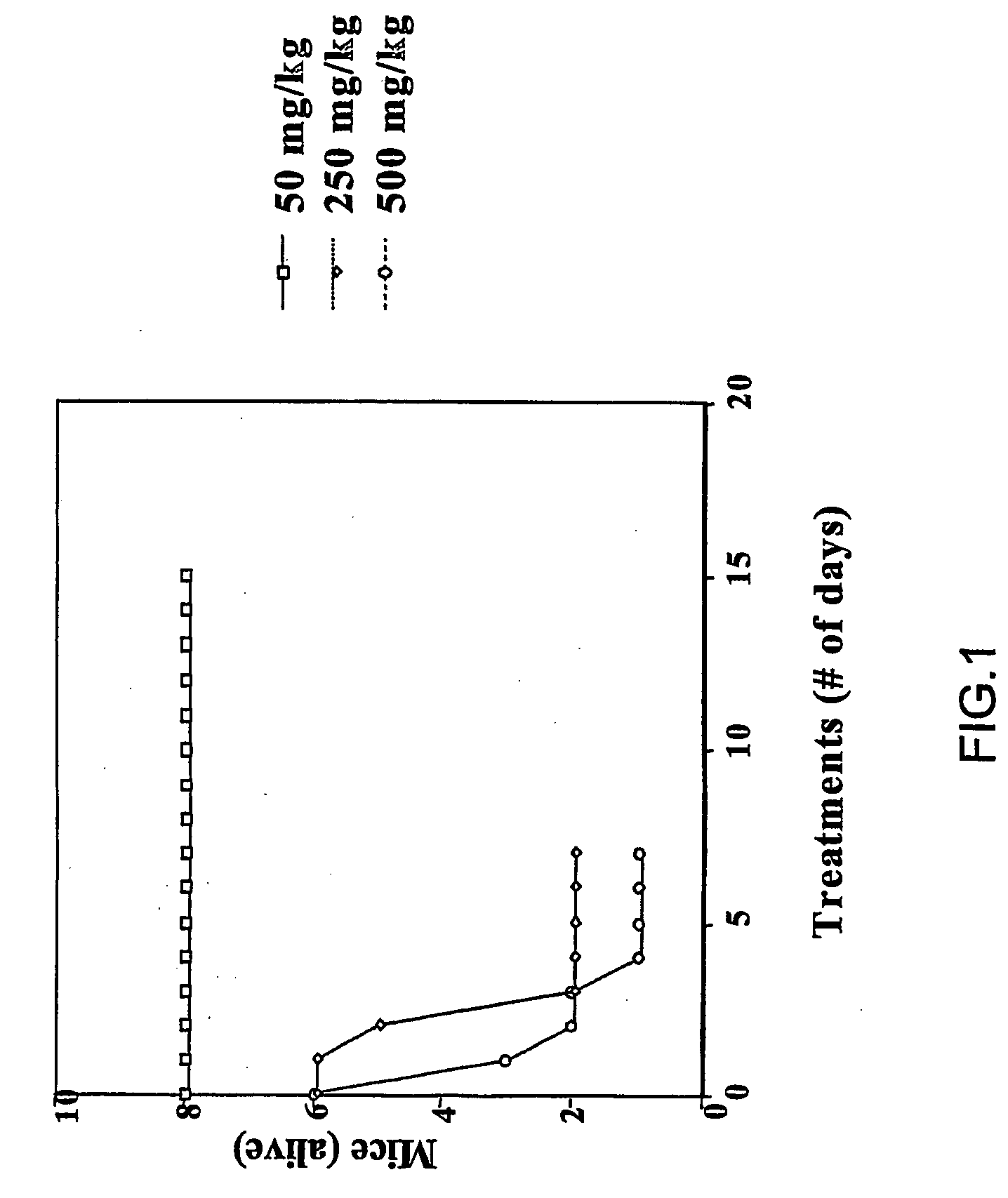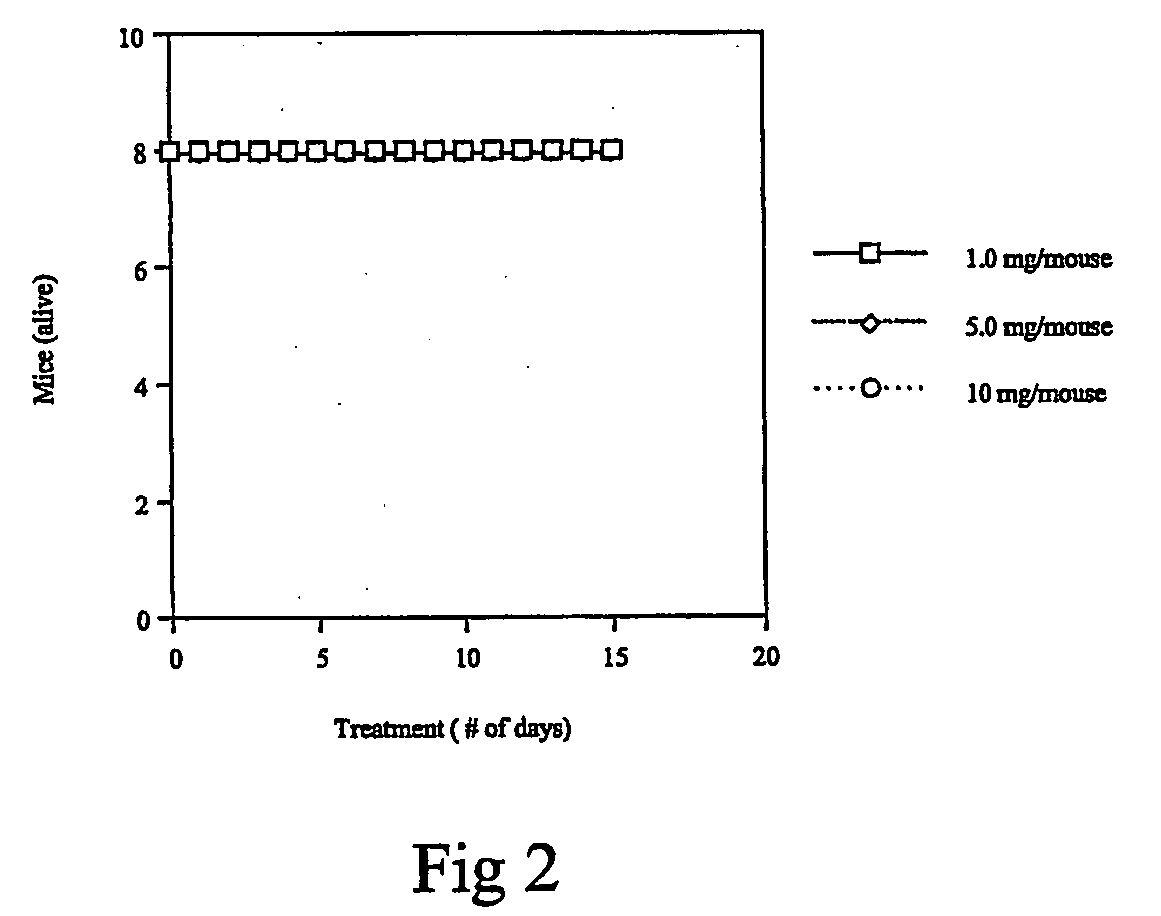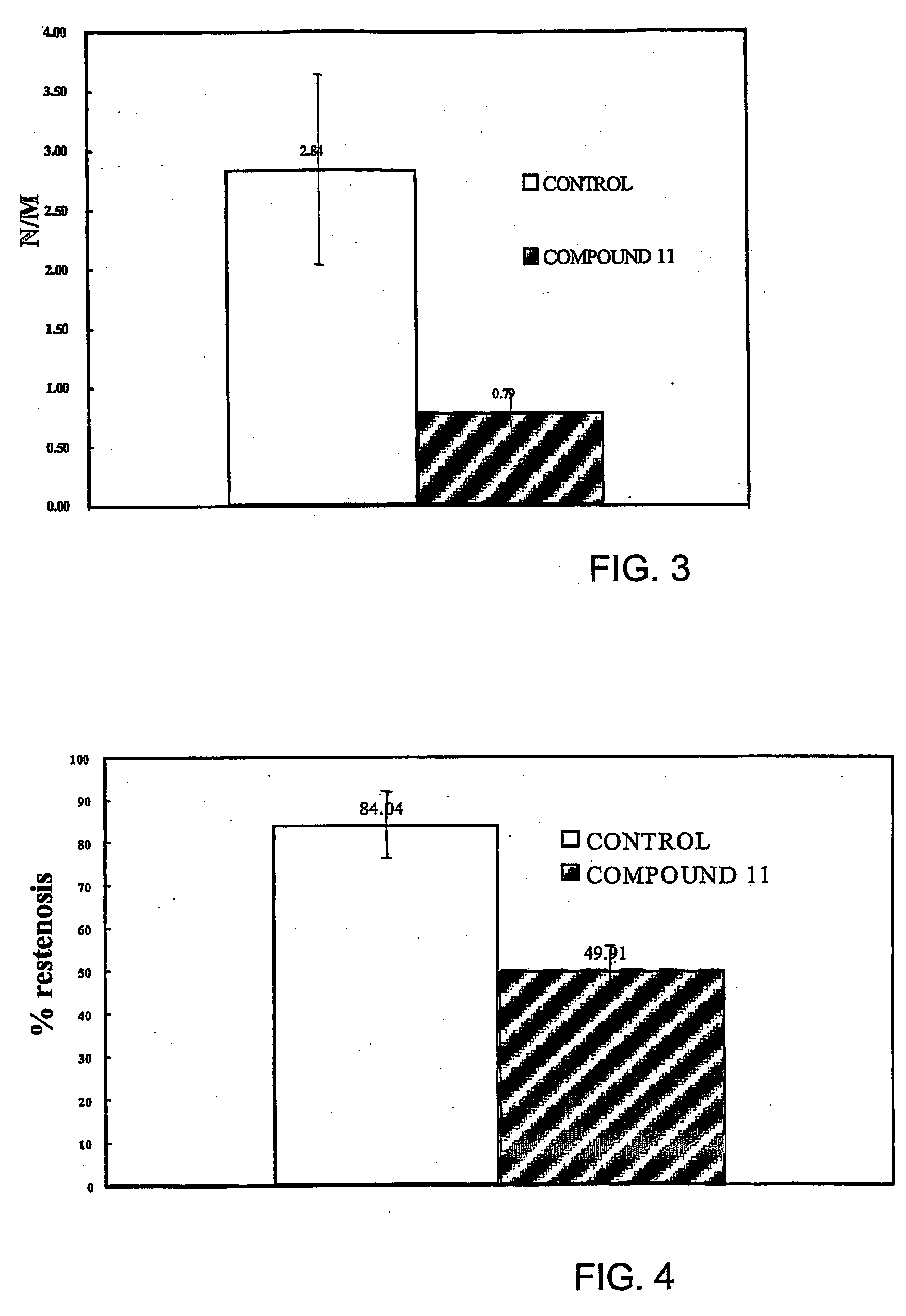Carbamoyl-and thiocarbamoyl-phosphonates and pharmaceutical compositions comprising them
a technology of carbamoyl and thiocarbamoyl phosphonates, which is applied in the field of compounds, can solve the problems of serious and frequent problems of dilated lesions chronic restnosis, and achieve the effects of preventing, treating and/or prophylaxis of various disease states, and improving the selectivity of action
- Summary
- Abstract
- Description
- Claims
- Application Information
AI Technical Summary
Benefits of technology
Problems solved by technology
Method used
Image
Examples
example 1
Diethyl N-(cyclohexylmethyl)carbamoylphosphonate
[0056] A solution of triethyl phosphonothiolformate (1.28 g, 5.65 mMol) and cyclohexylmethylamine (0.75 ml, 5.76 mMol) in MeCN (10 ml) was kept at room temperature for 3 days. The volatiles were removed, to give 1.4 g residue (89.3%) of oily product. NMR (CDCl3) 31P −2.01 ppm. 1H, 0.8-1.3 (m, 5H), 1.33 (t, J=6.9 Hz, 6H), 1.4-1.75 (m, 5H), 3.13 (t, J=6.9 Hz, 2H), 4.18 (m, 4H), 7.23 (m, 1H). Anal. Calcd. for C12H24NO4P: C, 51.98; H, 8.72; N, 5.05. Found: C, 51.15; H, 9.14; N, 5.38.
example 2
Diethyl N-(cyclohexylmethyl)thiocarbamoylphosphonate
[0057] A solution of diethyl N-cyclohexylmethylcarbamoylphosphonate (2.3 g, 8.3 mMol) and Lawesson reagent (1.68 g, 4.1 mMol) in toluene (60 ml) was refluxed for 1 h. 31P NMR indicated disappearance of the starting material and the appearance of a new peak at −1.93 ppm accompanied with some impurities. The solvent was evaporated and the residue was purified by chromatography over silica gel. The desired product was eluted by AcOEt to yield 0.62 g pure product as yellow crystals, m. p. 53° C. (from acetone-hexane). NMR (CDCl3) 31P, −1.34 ppm. 1H, 9.03 (1H bs); 4.31-4.13 (4H m); 3.53 (2H, t J=5.7 Hz); 1.75-1.65 (5H, m); 1.35 (6H t) 1.44-0.95 (6H, m). Anal. Calcd. for C12H24NO3PS: C, 49.14; H, 8.19; N, 4.77. Found: C, 49.45; H, 8.38; N, 4.60.
example 3
N-(Cyclohexylmethyl)thiocarbamoylphosphonic acid (8)
[0058] A solution of diethyl N-cyclohexylmethylthiocarbamoylphosphonate (0.6 g) and bromotrimethylsilane (1.08 ml) in acetonitrile (15 ml) was kept overnight at ambient temperature. The reaction mixture was decomposed by methanol and evaporated to dryness to give 0.45 g semisolid. NMR (D2O ) 31P, −0.48 ppm. 1H, 3.39 (2H, dd, 3JHH=7.2 Hz, 4JHP=1.6 Hz); 1.6-1.4 (5H, m); 1.15-0.8 (6H, m).
PUM
| Property | Measurement | Unit |
|---|---|---|
| pH | aaaaa | aaaaa |
| optically active | aaaaa | aaaaa |
| polymorphic | aaaaa | aaaaa |
Abstract
Description
Claims
Application Information
 Login to View More
Login to View More - R&D
- Intellectual Property
- Life Sciences
- Materials
- Tech Scout
- Unparalleled Data Quality
- Higher Quality Content
- 60% Fewer Hallucinations
Browse by: Latest US Patents, China's latest patents, Technical Efficacy Thesaurus, Application Domain, Technology Topic, Popular Technical Reports.
© 2025 PatSnap. All rights reserved.Legal|Privacy policy|Modern Slavery Act Transparency Statement|Sitemap|About US| Contact US: help@patsnap.com



